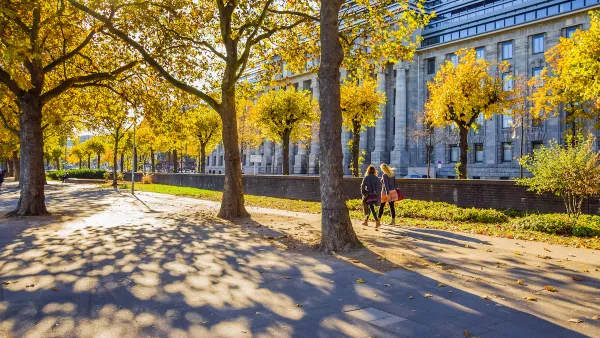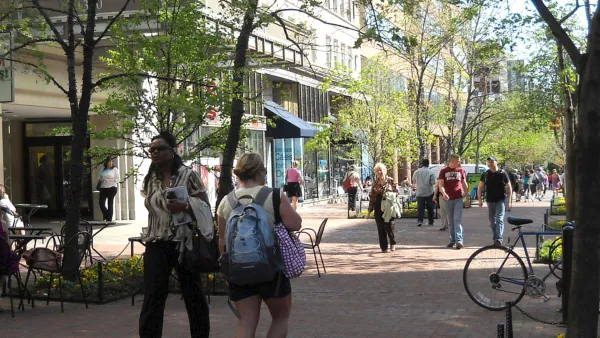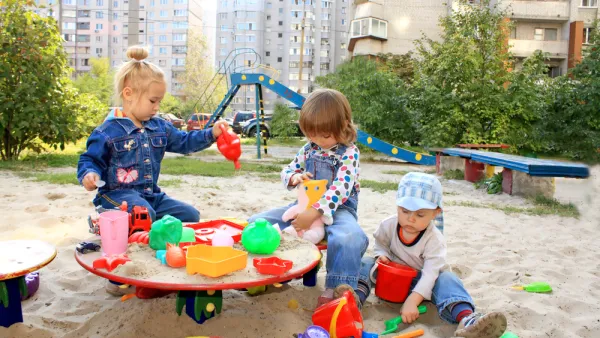As the pandemic emphasized, the way we design our cities can have lasting impacts on residents' health and wellness.

In Governing, Alan Ehrenhalt highlights the link between urban design and public health, pointing to arguments by public health experts that the way we design cities and buildings has a powerful impact on the health of individuals and populations.
A fair amount of public health by design has to do with re-engineering temperature, especially making the environment cooler in abnormally hot times and places. Reducing the amount of blacktop pavement is one way to do this; too much blacktop creates a heat trap. Protecting tree cover is one more; ample tree cover has been shown to reduce the prevalence of asthma in large cities.
As another example, walkability affects people's ability to get regular exercise by walking to work, school, or local amenities. Meanwhile, polluted air can counteract the positive effects of good sidewalks and crosswalks by contributing to the prevalence of lung and respiratory diseases.
Ehrenhalt provides other examples of design choices that impact public health, including stairways, ventilation, and open-air plazas. But while he supports the concept, Ehrenhalt cautions that "Adding health impact studies, in addition to forcing predictions that are difficult to make in the long run, would add significantly to the red-tape problem." Nevertheless, the public health lessons of the past century can inform design decisions that create healthier cities.
FULL STORY: Is the Design of Our Cities Making Us Sick?

National Parks Layoffs Will Cause Communities to Lose Billions
Thousands of essential park workers were laid off this week, just before the busy spring break season.

Retro-silient?: America’s First “Eco-burb,” The Woodlands Turns 50
A master-planned community north of Houston offers lessons on green infrastructure and resilient design, but falls short of its founder’s lofty affordability and walkability goals.

Delivering for America Plan Will Downgrade Mail Service in at Least 49.5 Percent of Zip Codes
Republican and Democrat lawmakers criticize the plan for its disproportionate negative impact on rural communities.

Test News Post 1
This is a summary

Test News Headline 46
Test for the image on the front page.

Balancing Bombs and Butterflies: How the National Guard Protects a Rare Species
The National Guard at Fort Indiantown Gap uses GIS technology and land management strategies to balance military training with conservation efforts, ensuring the survival of the rare eastern regal fritillary butterfly.
Urban Design for Planners 1: Software Tools
This six-course series explores essential urban design concepts using open source software and equips planners with the tools they need to participate fully in the urban design process.
Planning for Universal Design
Learn the tools for implementing Universal Design in planning regulations.
EMC Planning Group, Inc.
Planetizen
Planetizen
Mpact (formerly Rail~Volution)
Great Falls Development Authority, Inc.
HUDs Office of Policy Development and Research
NYU Wagner Graduate School of Public Service





























